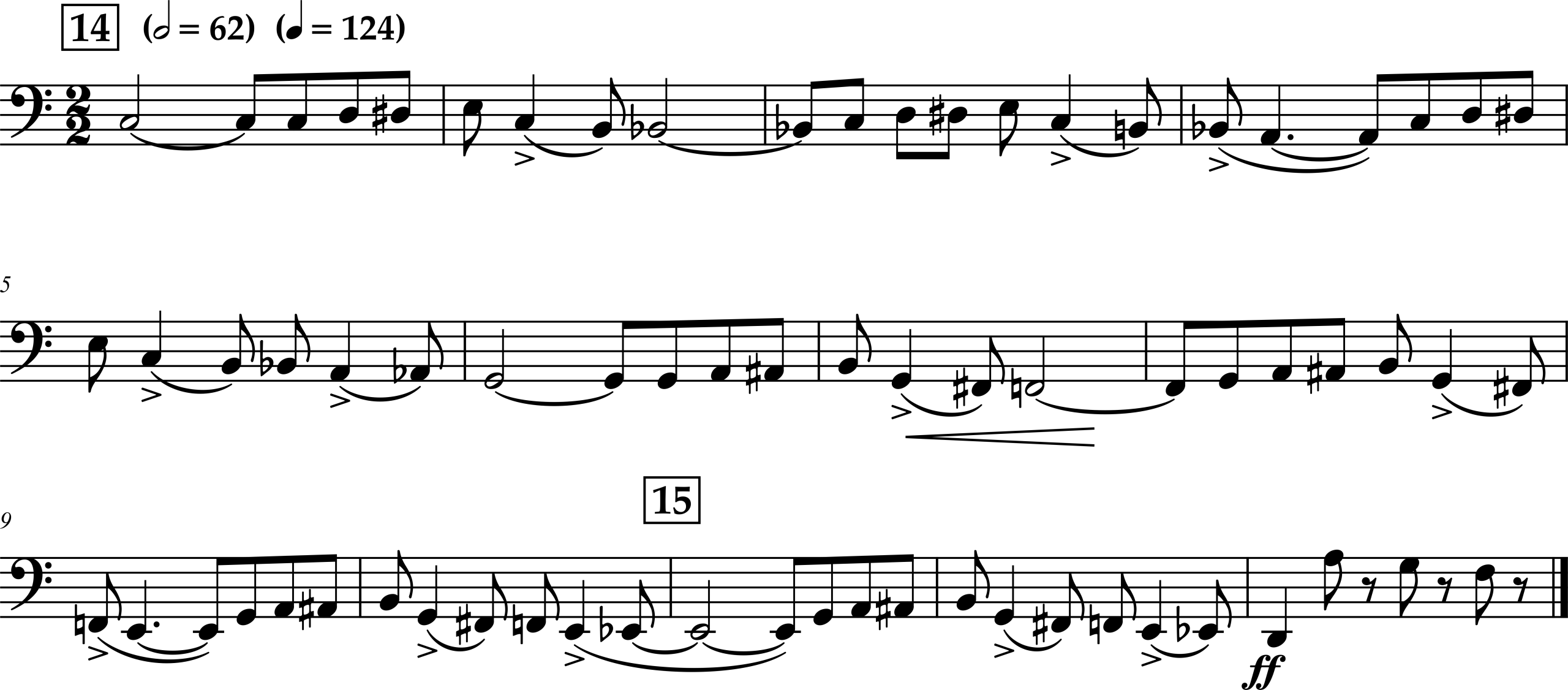C. Ties and Dotted Quarter Notes
Ties and Dots: Part 1
In this chapter, we turn our focus to dotted quarter notes as well as ties between half, quarter, and eighth notes. Both are notational conventions for lengthening a note without re-attacking it.
Ties are perhaps simpler to grapple with since they show the exact duration or durations to be added to the principal note. Dots require a small amount of math to determine the equivalent rhythmic value to append to the principal note. (As an aside, and since it is relevant to this chapter, a dotted quarter note is equivalent to a quarter note tied to an eighth note. It may be helpful to imagine this somewhat vividly until a more intuitive understanding of the notational symbol and its meaning have been attained.)
Ties are the focus of Exercises 1C-1 through 1C-4. Dotted quarter notes first appear in Exercise 1C-5, after which ties and dotted quarters are mixed freely.
One important note: Rearticulating each note beneath a slur—whether on a new rhythmic syllable, a new sound, etc.—is critical when performing a pitched excerpt without pitch. Unlike texts that use unpitched rhythms notated on a single line, our text uses mostly pitched rhythmic exercises drawn from real repertoire. Articulation markings from the original parts or scores have been preserved, meaning that students should be careful to differentiate between ties, which should not be rearticulated, and slurs, which should be.
Exercise 1C-1: Samuel Coleridge-Taylor, Ballade in C minor, Op. 73

Exercise 1C-2: George Gershwin, An American in Paris
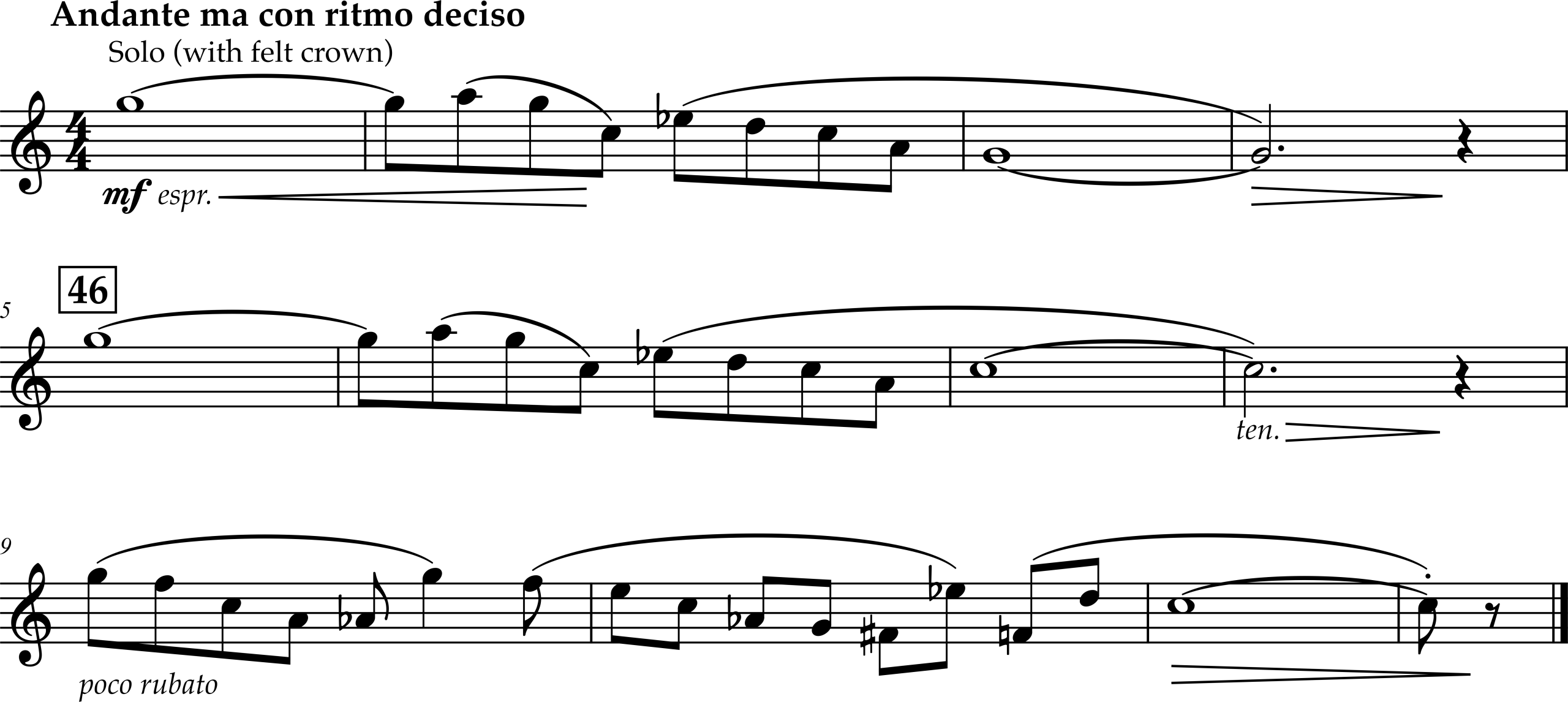
Exercise 1C-3: Claude Debussy, Suite bergamasque, L. 75, Passapied
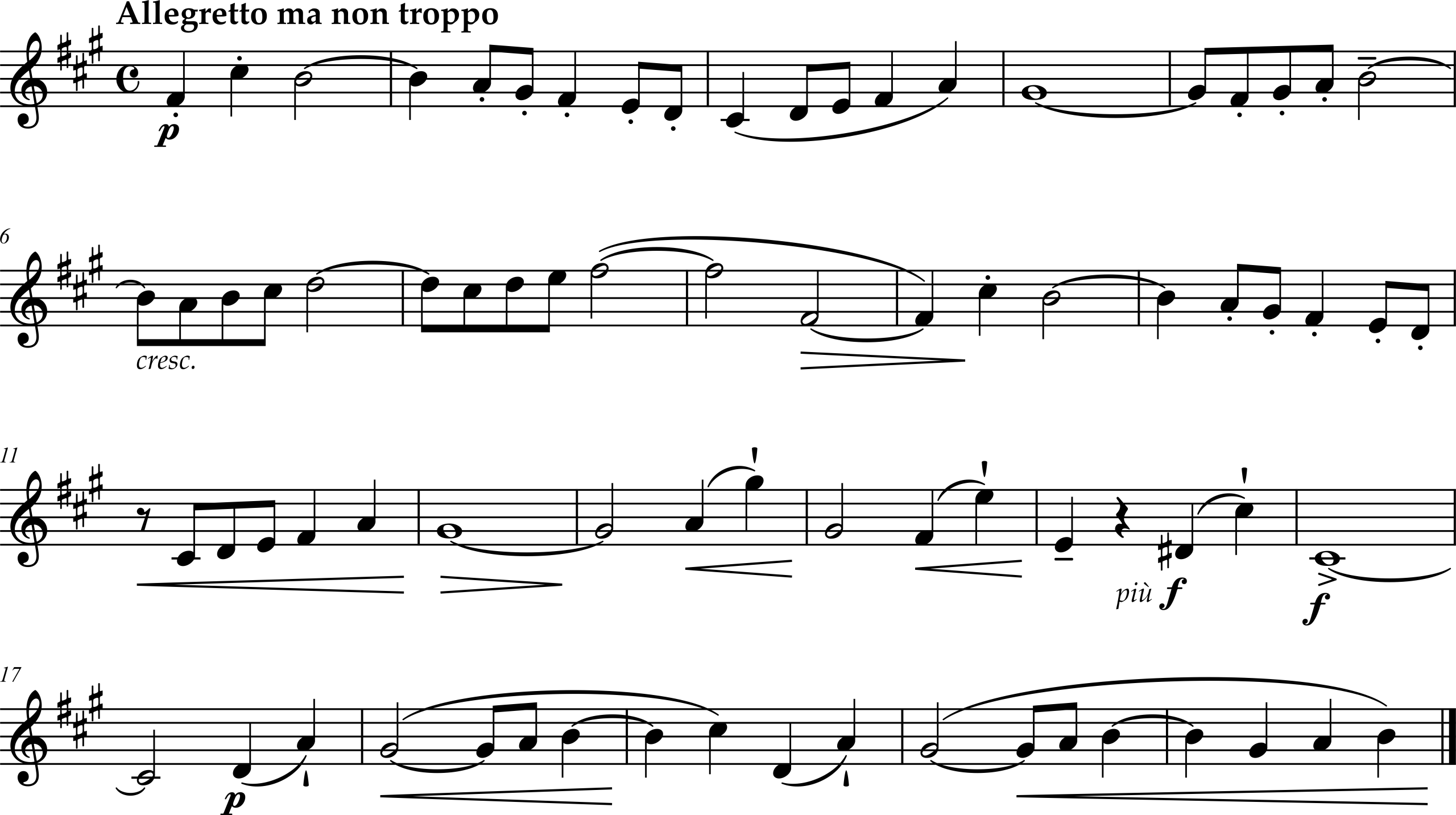
Exercise 1C-4: Maurice Ravel, Pavane pour une infante défunte (orchestral version)

Exercise 1C-5: Ralph Vaughan Williams, The House of Life, Number 2, “Silent Noon”
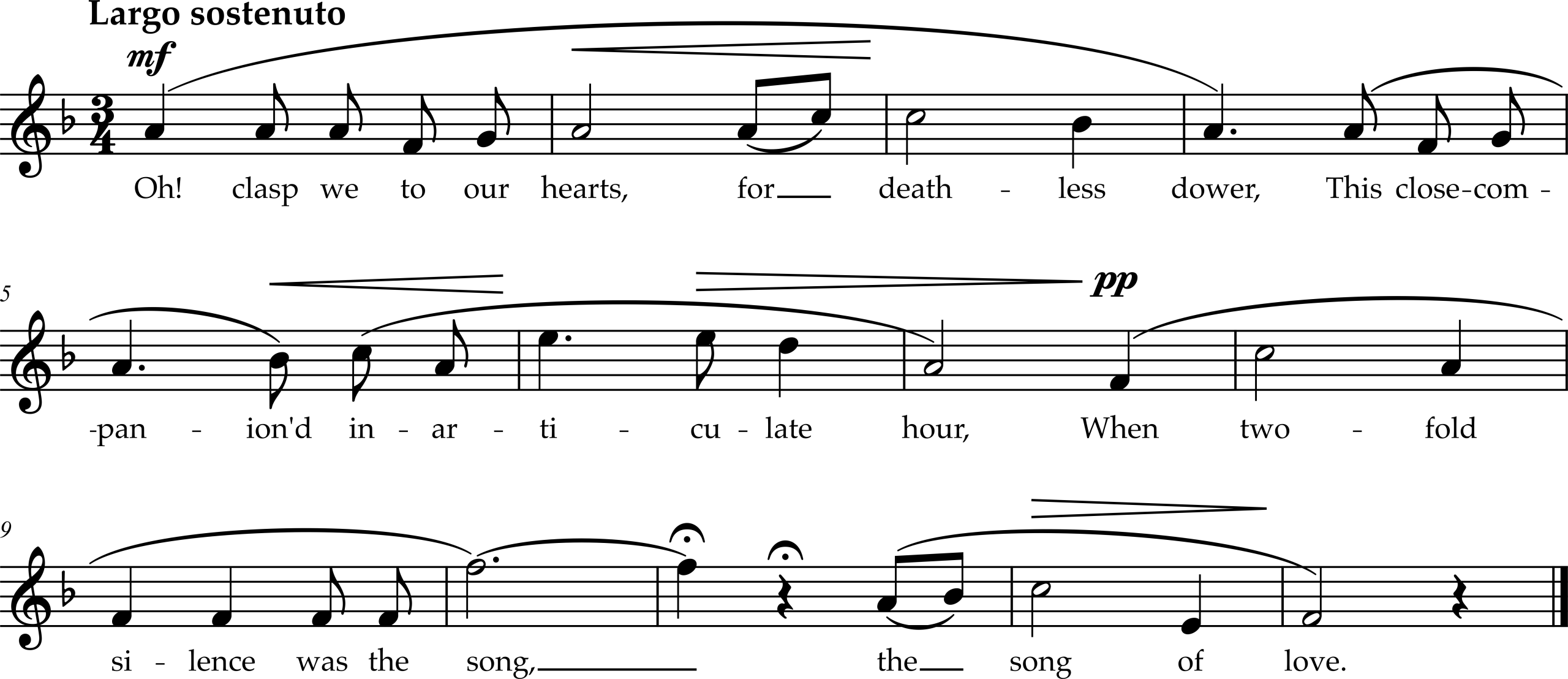
Exercise 1C-6: Camille Saint-Saëns, Cavatine, Op. 144
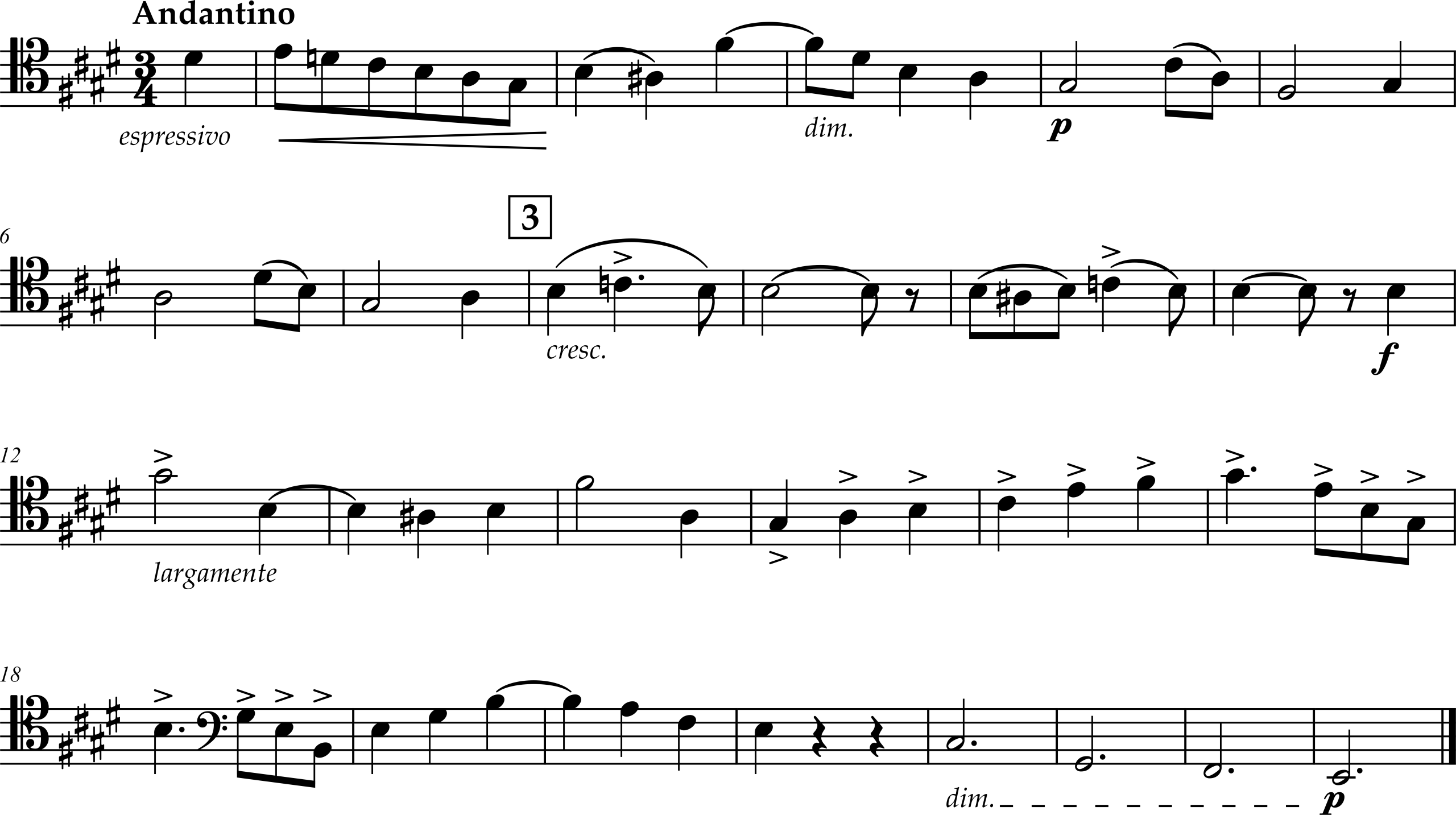
Exercise 1C-7: Vincent d’Indy, Choral varié, Op. 55
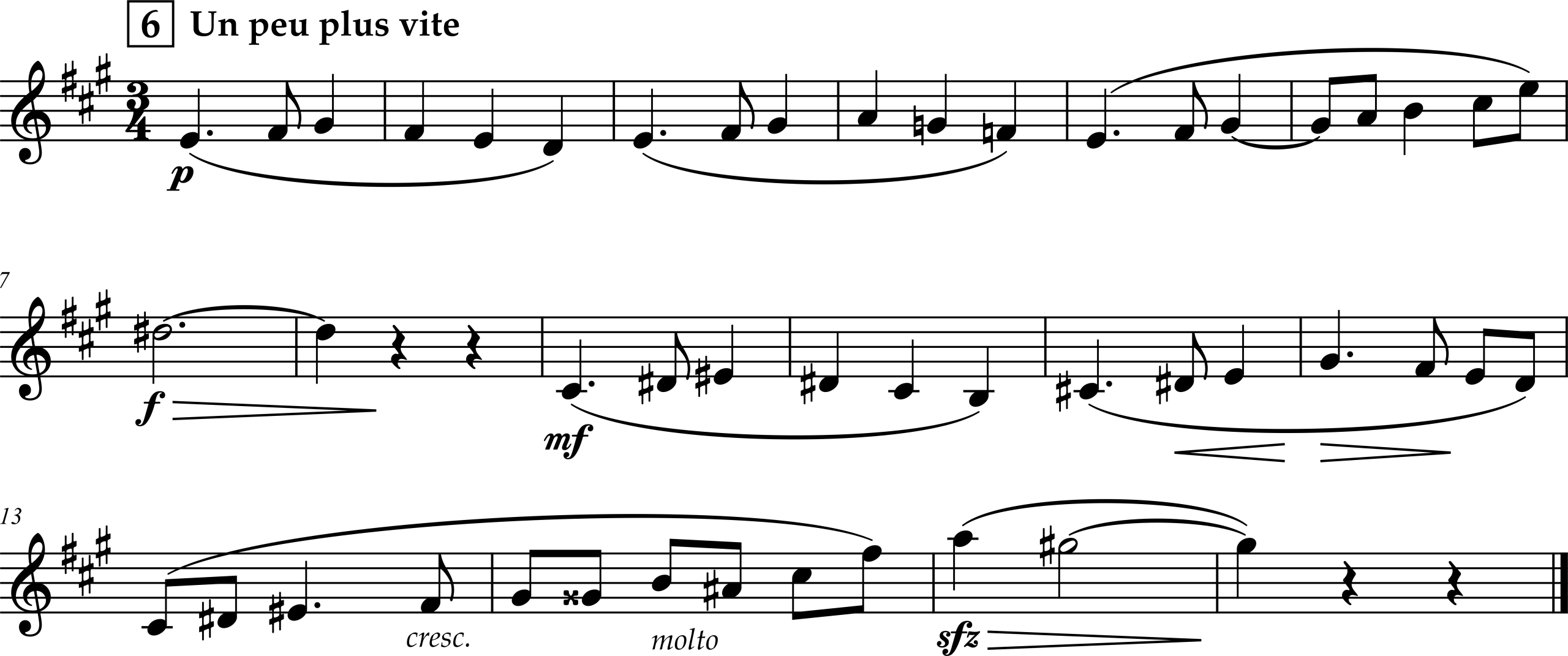
Exercise 1C-8: Dmitri Shostakovich, Symphony Number 1 in F minor, Op. 10, Movement 3
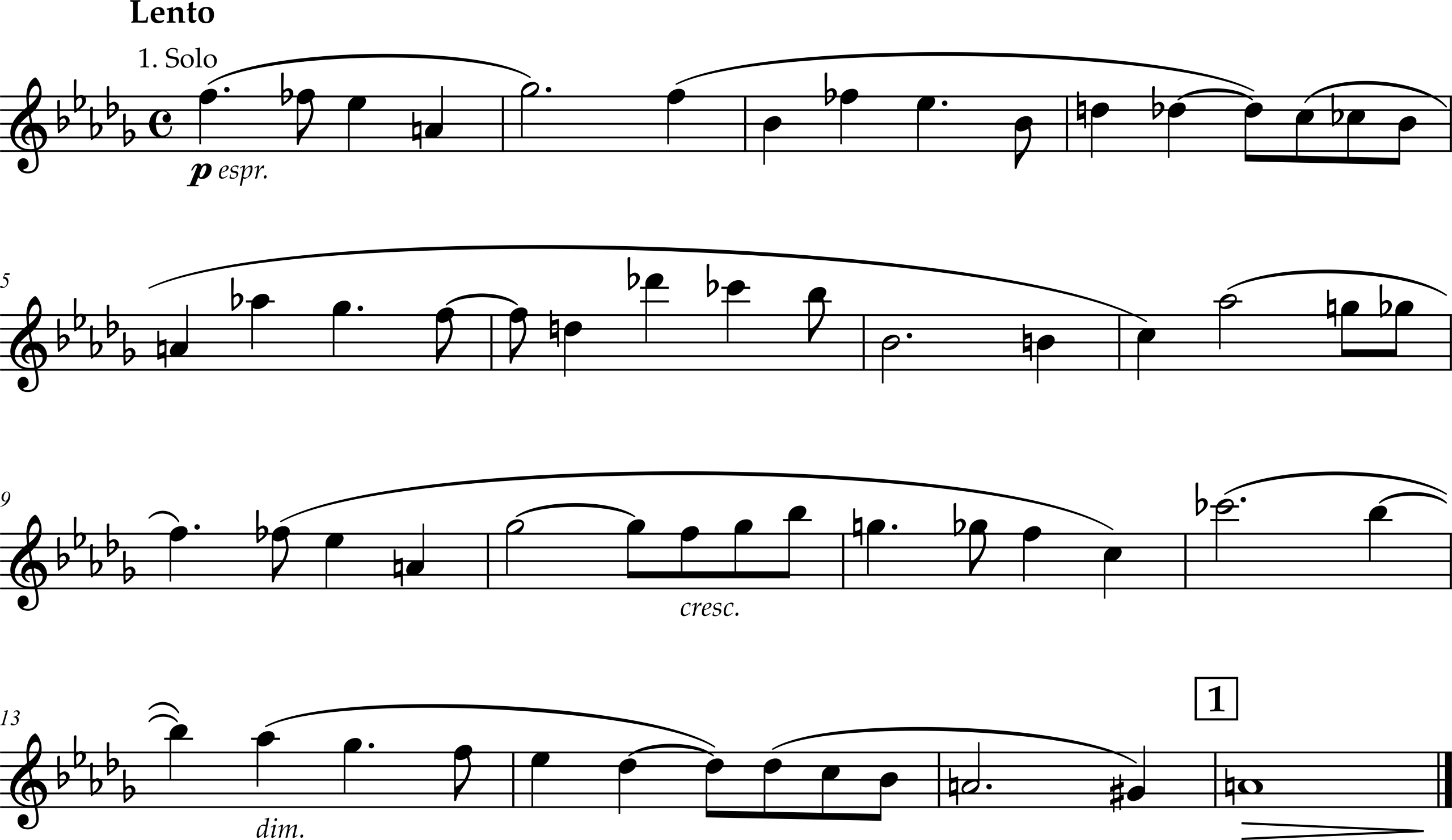
Exercise 1C-9 has three measures’ worth of 3/2, a time signature we will explore in Chapter 3. For now, we recommend counting off six quarter-note beats for each 3/2 measure. You will also need to add two extra beats to your 4/4 conducting pattern however you see fit.
Exercise 1C-9: Dmitri Shostakovich, Symphony Number 1 in F minor, Op. 10, Movement 4
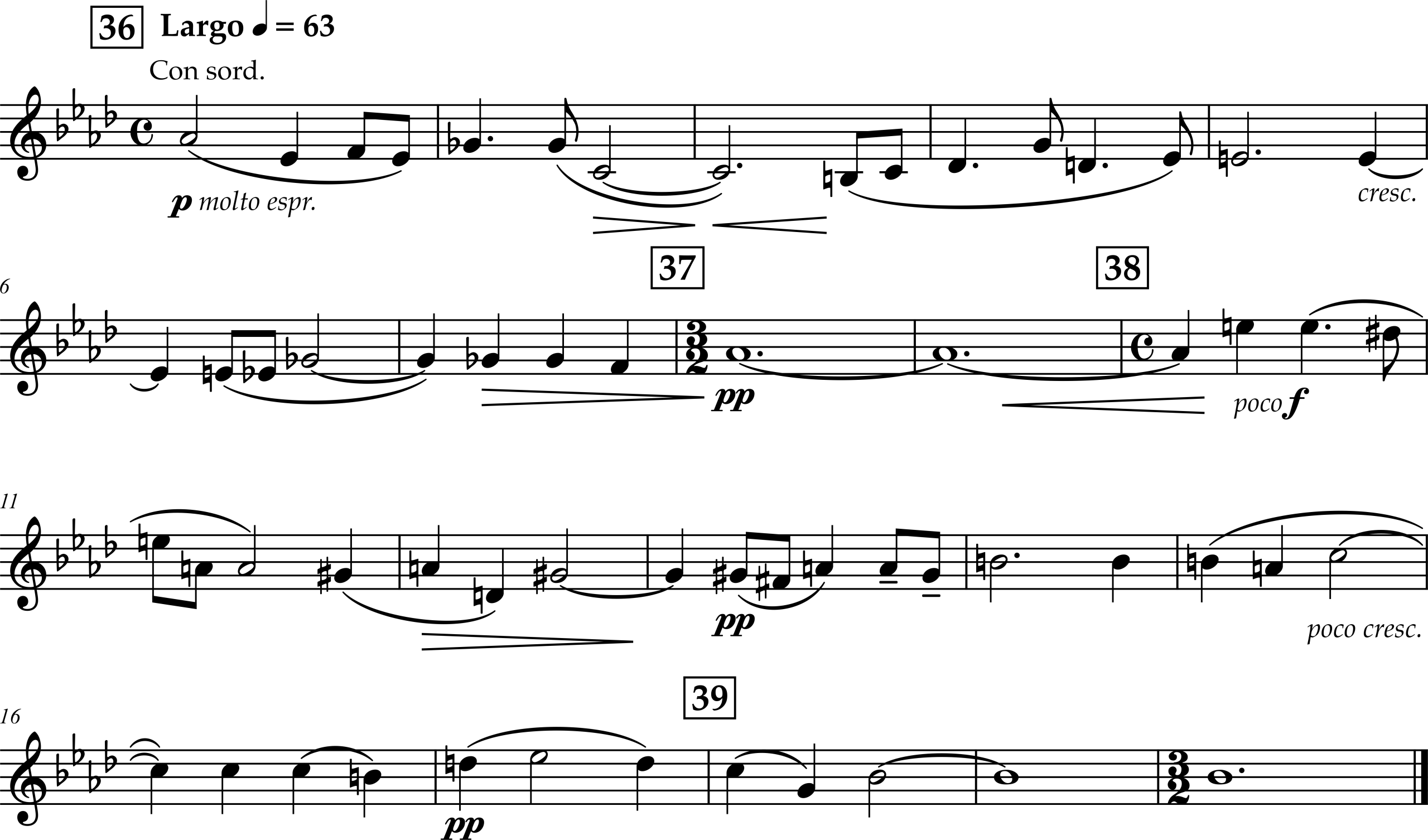
The notated time signature for Exercise 1C-10 is 2/2 which, like the 3/2 in Exercise 1C-9, we will explore further in Chapter 3. Notice that the notation looks just like a measure of 4/4: there are still four quarter notes’ worth of music in each measure, and you could theoretically change the time signature from 2/2 to 4/4 without changing any other part of the notation. For this excerpt, conductors may choose to conduct the half note or the quarter note. Either way, it is worth practicing while feeling the beat at the quarter-note level, especially at the notated tempo or slower. You may choose to return to this after you have worked through some of Chapter 3.
Exercise 1C-10: Darius Milhaud, La création du monde, Op. 81a
